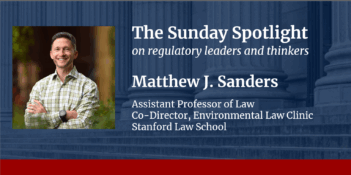
Experts debate EPA’s recent move to consider regulating its own cost-benefit analyses.
Cost-benefit analysis has long played a central—yet at times controversial—role in environmental regulation.
The premise that the overall benefits created by a regulation should justify its costs seems simple enough on its face. Yet that premise—enshrined in Executive Order 12,866—sometimes comes into tension with specific statutory provisions, such as some parts of signature federal environmental laws in the United States, including the Clean Air Act.
Now, a recent advance notice of proposed rulemaking (ANPRM) issued by the U.S. Environmental Protection Agency (EPA) has reignited debate over the role of cost-benefit analysis in developing regulations. In its ANPRM, EPA solicited public input on how the agency should define and consider costs and benefits when developing its regulations, with the stated aim of improving consistency and transparency in cost-benefit analysis.
When then-EPA Administrator Scott Pruitt announced the ANPRM in June 2018, he stated it would be “the next step toward providing clarity and real-world accuracy with respect to the impact of the agency’s decisions on the economy and the regulated community.”
Critics, however, point out that rigidly regulating how EPA weighs costs and benefits could lead the agency to ignore less-easily calculable—but still valuable—benefits of environmental protections. Such a move, they claim, might actually imperil rigorous clean air and water standards.
This series in The Regulatory Review examines the significance of EPA’s approach to cost-benefit analysis and offers recommendations on whether and how to improve it. Contributors to the series include: Joseph E. Aldy, associate professor at the Harvard Kennedy School; Michael A. Livermore, professor at the University of Virginia School of Law; Paul R. Noe, vice president for public policy at the American Forest and Paper Association; Lisa A. Robinson, senior research scientist at the Harvard T.H. Chan School of Public Health; and Stuart Shapiro, professor and associate dean of faculty at the Bloustein School of Planning and Public Policy, Rutgers University.
Regulating Cost-Benefit Analysis
August 27, 2018 | Lisa A. Robinson, Harvard T.H. Chan School of Public Health
Considering positive and negative impacts of a proposed regulation seems like an essential component of sound decision-making. Consistency and transparency seem like laudable goals too, and improvement is always possible. But what do terms such as “consider,” “consistency,” and “transparency” really mean in this context?
Crossing the Regulatory Divide to Enhance Societal Well-Being
August 28, 2018 | Paul R. Noe, American Forest and Paper Association
EPA recently has taken a historic step to advance the “cost-benefit state,” the paradigm in which “government regulation is increasingly assessed by asking whether the benefits of regulation justify the costs of regulation.” This advance notice of proposed rulemaking raises many interesting issues—but most importantly, it could lead to fundamental and beneficial change that is long overdue.
Tainted Review
August 29, 2018 | Michael A. Livermore, University of Virginia School of Law
Consistency and transparency are, in my view, generally good things. So is rational consideration of costs and benefits. Environmentalists, however, have every right to be deeply skeptical of any proposal made by this Administration.
The Pitfalls of Consistent Cost-Benefit Analysis
August 30, 2018 | Stuart Shapiro, Edward J. Bloustein School of Planning and Public Policy, Rutgers University
EPA’s recent advance notice of proposed rulemaking claims it is raising important issues about the use of cost-benefit analysis in regulatory policymaking. But it also raises the questions of whether those issues are truly crucial, why this is the time to address those issues, and whether EPA under its current leadership is capable of adjudicating them objectively.
Improving Regulatory Transparency Through Retrospective Analysis
August 31, 2019 | Joseph E. Aldy, Harvard Kennedy School
Thoughtful policy debates about the future of environmental regulation require rigorous, transparent evidence addressing these questions. Evaluating the performance of regulations—through retrospective analysis of their impacts, benefits, and costs—can play a critical role in informing these debates.



